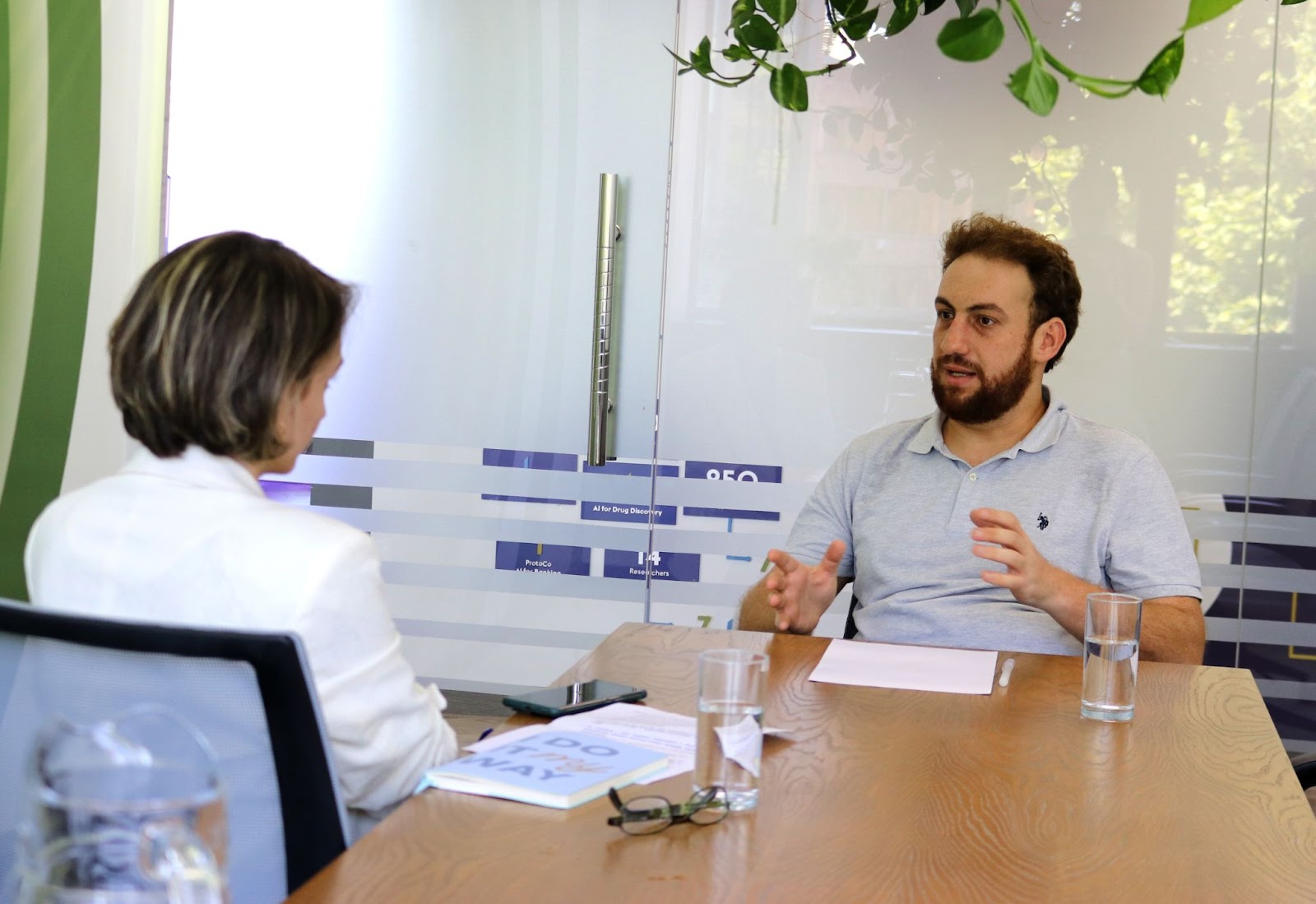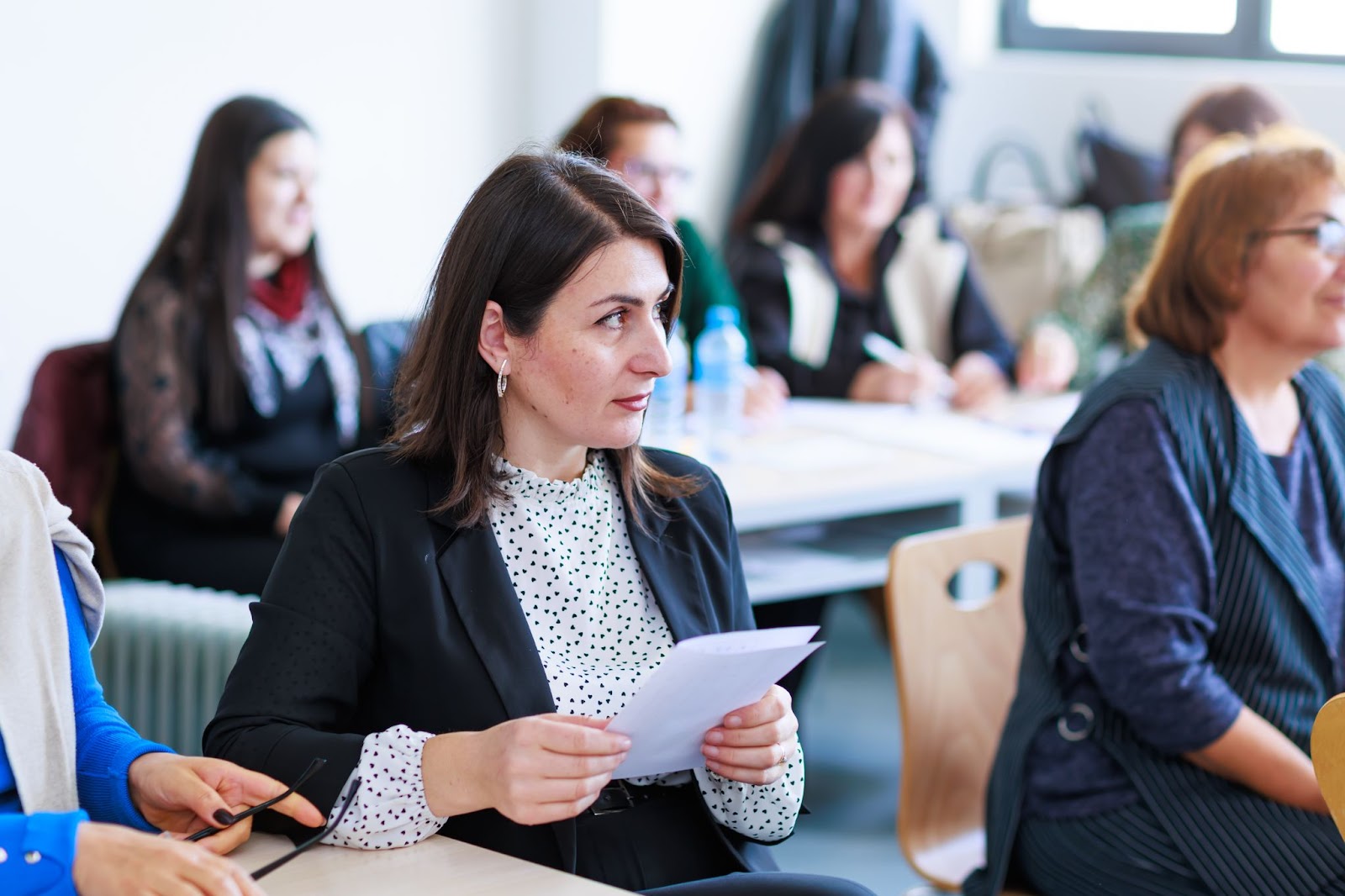2024-09-13


- Why Do People Find Math Difficult?
- How Can We Make Mathematics "Easier"?
- Is Mathematics the Language of AI? What Is the Connection Between the Two?
- How Is Math Taught Within Generation AI?
"I fell in love with mathematics at an early age, though, like many children, I cannot quite explain why"
Here is how Khatchig-Hrag Derjian, Math working group leading expert of Generation AI High School project and mathematics educator describes his love for mathematics. Born in Lebanon, he graduated from Hamazkayin's Melankton and Haig Arslanian Seminary and earned his MA in Mathematics Education and a BS in Mathematics from the American University of Beirut. Since 2023, he has led the work of the expert group developing the content of the Advanced Algebra within the Generation AI High School project.

"I chose mathematics education because it was a different world—one that included mathematics, which I love, children, whom I love, and social sciences like philosophy and psychology. It was the perfect interdisciplinary choice, and I've never regretted it. Alongside mathematics, I'm also deeply interested in art and culture, and I often find connections between them and math. My favorite activities, like playing the violin and theater acting, may have influenced my decision not to pursue pure mathematics."
Is Mathematics the Queen of Sciences? The True Beauty of Math
Beyond definitions, I adhere to the principle of renowned mathematician Georg Cantor: "The essence of mathematics lies in its freedom." To me, this is the most fascinating aspect of mathematics: it serves as a form of self-expression and a concept that not only develops our logic but also enhances our problem-solving skills.
As a science, mathematics, when viewed in conjunction with other fields, reveals its true beauty and power. It crosses many disciplines: economics, physics . . . with that interdisciplinary connection becoming really applied, essential and tangible for real life. At the same time, we must acknowledge the significant role mathematics plays in shaping numerous branches of science.
However, mathematics derives its universality not only from its widespread applications but also, and perhaps more importantly, from its genealogy:
Is mathematics invented or discovered?
If it's human-created, why is it so prevalent in nature?
If it originally existed in nature, how has it become so tailored to our needs?
This is where the perception of mathematics as a universal language starts to take shape. While I cannot definitively say to what extent the universality of mathematics can be conveyed in schools, its philosophical and historical significance should be taught alongside its practical applications. Mathematics encompasses aesthetics, history, evolution, internationalism, and universality—values that are just as essential as its other components.
Why Do People Find Math Difficult?
The notion that mathematics is difficult is a stereotype we frequently encounter, especially at the school level. This perception is often reinforced from both sides. On one hand, it stems from mathematicians or teachers who believe that presenting their theories or methods in a complicated way makes them seem more "mathematical." However, I’m convinced that even the most complex mathematical principles can be communicated clearly and accessibly, without being "privatized." The other part of the responsibility falls on the public domain. This is where we see a psychological phenomenon called "math anxiety,"where people fear they won't be able to succeed and begin to view math as difficult or uncomfortable.
How Can We Make Mathematics "Easier"?
Mathematics is a right that should be democratized and made accessible to everyone. In this sense, it is important to consider։
Mathematics education։ It is a distinct field, it is neither a separate pedagogy nor mathematics alone. A skilled mathematician may not necessarily be a good educator, and vice versa. If the subject isn’t presented in an engaging way for students, it’s natural that they won’t show interest.
Prevent the deepening of stereotypes։My observations suggest that individuals' attitudes toward math often correlate with their perceived proficiency. There’s often no other reason for their feelings toward the subject. It is also crucial to demonstrate to the student the connection between mathematics and real life; they need to see a future within the field and understand where it will be applied. The principle of Cantor’s freedom applies here as well: students should not memorize any principle without understanding its purpose.
The “Global Decline” in Math: What’s Causing Grades to Drop?

Reports from the OECD and international tests show a global decline in students' math scores
As a mathematics educator, my perspective is highly student-centered. While it's true that mathematics results often lag behind, I believe that mathematics is more than just a tool for meeting international standards. To me, mathematics is a right, a means of development, and a discourse.
Evaluating students can be challenging. A child might perform better under different assessment standards. We need to rethink how we teach and evaluate the subject.
Having Olympiad winners and skilled mathematicians is one thing; promoting democratic mathematics is another. For instance, a few years ago, Finland was widely praised as amodel for mathematics education.

As a specialist, I couldn’t resist trying to understand this phenomenon myself. During my research, I found that South Korea, which also has a strong math education system, achieved better results. However, it wasn’t their experience that was being widely discussed.

The reason is that students in Scandinavian countries achieved their academic success easier and joyfully, while in South Korea, achieving high results required additional classes, extra pressure and training.
The Finnish model proved more effective, yielding better results in less time. I wholeheartedly endorse this approach. While the Finnish experience may not be directly transferable to Armenia due to differing conditions, it's essential to consider the underlying educational principles.
Is Mathematics the Language of AI? What Is the Connection Between These Two Fields?
In artificial intelligence and, especially, machine learning, so many mathematical principles are applied that these fields can be considered branches of both computer science and mathematics. While you may code in a programming language, the underlying logic is fundamentally mathematical. You might wonder why people are more interested in programming or AI over mathematics. When children learn programming, they can easily see its practical applications and understand its direction. The relevance of mathematics, however, may seem less tangible, making it harder for them to appreciate its value. To inspire more children to pursue mathematics, we need to better highlight these connections.
Does the Use of Technological Innovations Like ChatGPT Promote or Hinder Mathematics Learning?
In the previous era, when calculators began to appear and gain widespread use, a significant protest movement emerged in the United States. Mathematics teachers rallied with slogans and banners like "So We Don’t Have a Generation That Doesn’t Think" and "Ban Calculators in Schools." Today, however, their use has become commonplace.

Parallels: 20th Century Protests Against Calculators in Schools and Today's Debate on AI
The same is with artificial intelligence. Today, apps like Photomath allow you to simply capture a problem and receive a step-by-step solution. These tools are helping to popularize mathematics, making knowledge more accessible to everyone. While teaching children the fundamentals of calculation is crucial, there's no need to overburden them with excessive practice.
The integration of technology doesn't diminish the significance of mathematics; it redefines its role. While some of my colleagues may hold a different perspective, I firmly believe we should embrace technology to its fullest. It's crucial to remember that mathematics is more than just calculations—those are just one aspect of its broader skill set.
On the other hand, it's imperative to recognize that mathematical knowledge is not merely a right but a necessity and obligation. When employing AI-driven platforms, comprehending the underlying principles is paramount. Children should be educated to grasp these concepts, preventing them from viewing AI as a mysterious black box. They need to understand that algorithms and decision trees operate based on probability theory and can occasionally yield inaccurate outcomes, if, for instance, the data used by the AI is not sufficiently representative. Additional awareness of these aspects is indispensable.
Teaching Mathematics withinGeneration AI
- What Topics Are Included in the Curriculum?
The primary content areas are:
Calculus
Linear Algebra
Probability Theory and Statistics
Integrating these topics seamlessly requires alignment with existing standards. Within Generation AI, we adhere to Armenia's new general education standards and prioritize the continuity of students' regular learning, while also allowing flexibility in the program's development. For instance, it's encouraging that probability theory and statistics are already part of the standard, and we are simply aiming to dedicate more time to these topics.
We design the program to equip students for studies in AI or machine learning, while also maintaining the freedom to choose other fields. If we focused solely on AI, we could have developed a much narrower program. However, we've approached mathematics as a fundamental discipline to ensure that students pursuing engineering or other disciplines have a solid foundation.
Within the Generation AI high school project, our team of experts focuses on student-centered, active learning, emphasizing a gamified approach, project-based learning, and oral language development. After all, mathematics involves discourse, and students should be able to explain, challenge, and appreciate others' opinions.
Our program incorporates all of these elements, and I’m pleased to say that the teachers are quite satisfied with the manual. Naturally, there were challenges in the beginning, as is expected when testing something new, especially in a field where making changes is difficult itself. Teachers often fear that something might not work out. However, we are already seeing a positive transformation. There's a noticeable increase in motivation among the children, with some improvements in both interest and results. We’re taking careful but steady steps forward, without rushing the process.

Today, the role of the teacher in the classroom is transforming. The traditional methods of lecturing, modeling everything, and relying on repetition and memorization are becoming outdated. Instead, it's crucial for students to ask questions, explore, discover answers, and understand the logic behind solutions. In this regard, my colleagues at FAST and I agree, and we embrace this challenging shift because, after all, we are dealing with a cultural change.
Feedback from all teachers is crucial to us, and we hope they will actively participate in finalizing the manual. After all, it is not the experts or our partners who truly know the students, but the teachers. The beauty of the FAST's program lies in this balance: my colleagues and I bring international experience and standards, while our teachers contribute their daily, hands-on experience. This balance is key to our success.
Spread the Word!If you found this blog interesting, share it with others! We post about the latest academic, technological, and innovative stories from industry experts.

Check our recent blog posts






